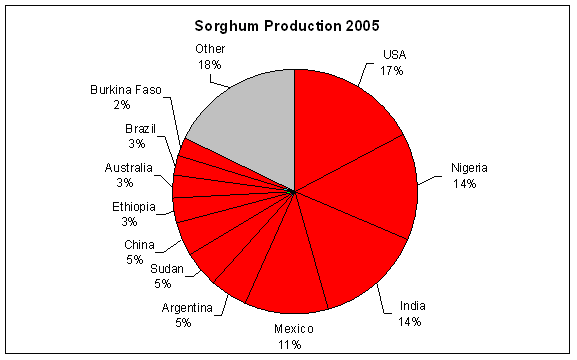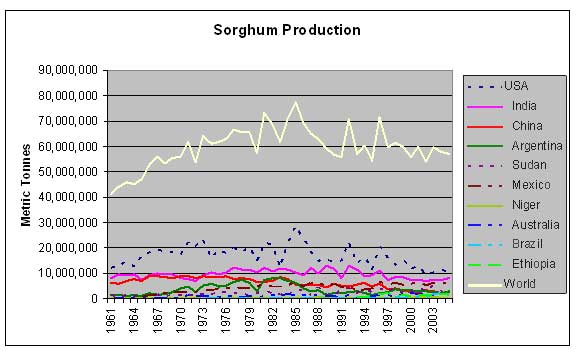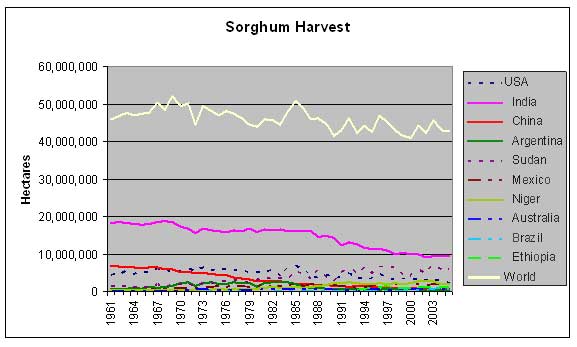![]() Species |
Rice |
Maize |
Wheat |
Barley |
Oats |
Foxtail Millet |
Pearl Millet |
Rye |
Sorghum |
Wild Rice |
Brachypodium |
Oryza Species |
Grape |
Arabidopsis
Species |
Rice |
Maize |
Wheat |
Barley |
Oats |
Foxtail Millet |
Pearl Millet |
Rye |
Sorghum |
Wild Rice |
Brachypodium |
Oryza Species |
Grape |
Arabidopsis
Figure 1* |
Figure 2* - Global Sorghum Production Map |
|
The top sorghum producing countries (see Figure 1) are the United States (17% of the world production), Nigeria, India (each with 14%) and Mexico (11%). The US population consumes most sorghum through intermediary livestock that consumes it, but the prevalence of sorghum in many other countries (see Figure 2), such as South America and Africa, indicate the areas where human nutrition depends heavily on grain sorghum. For more information on nutrition, see Sorghum Nutrition and Recipes. As mentioned in the introduction, sorghum has an advantage over corn in drier and hotter climates. At the same time it is more tolerant of wet soils and flooding than most grains (2). In addition to tolerating these temperature and water stresses, sorghum adapts well to different soil types and toxicities, and these factors together make it an ideal crop for growing in abiotically stressful environments (6). Unlike corn, however, sorghum's yield under different conditions is not so varied (3). Its fairly stable yield across these conditions reduces the risk of crop failure in these areas (3, 6). These factors all contribute to where sorghum production is found. Since 1961 sorghum production has risen almost 45%, but the land area used to grow it has decreased slightly (see Figs 3 & 4), suggesting that on average yields have increased. The US produces the most sorghum and India ties for second, but India dedicates almost 3 times the land mass to sorghum production than does the US. | |
Figure 3*
|
Figure 4*
|
| * (Data from 4) For more information on production and trends in sorghum, see this FAO report | |
References: